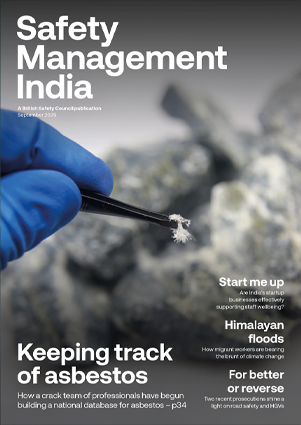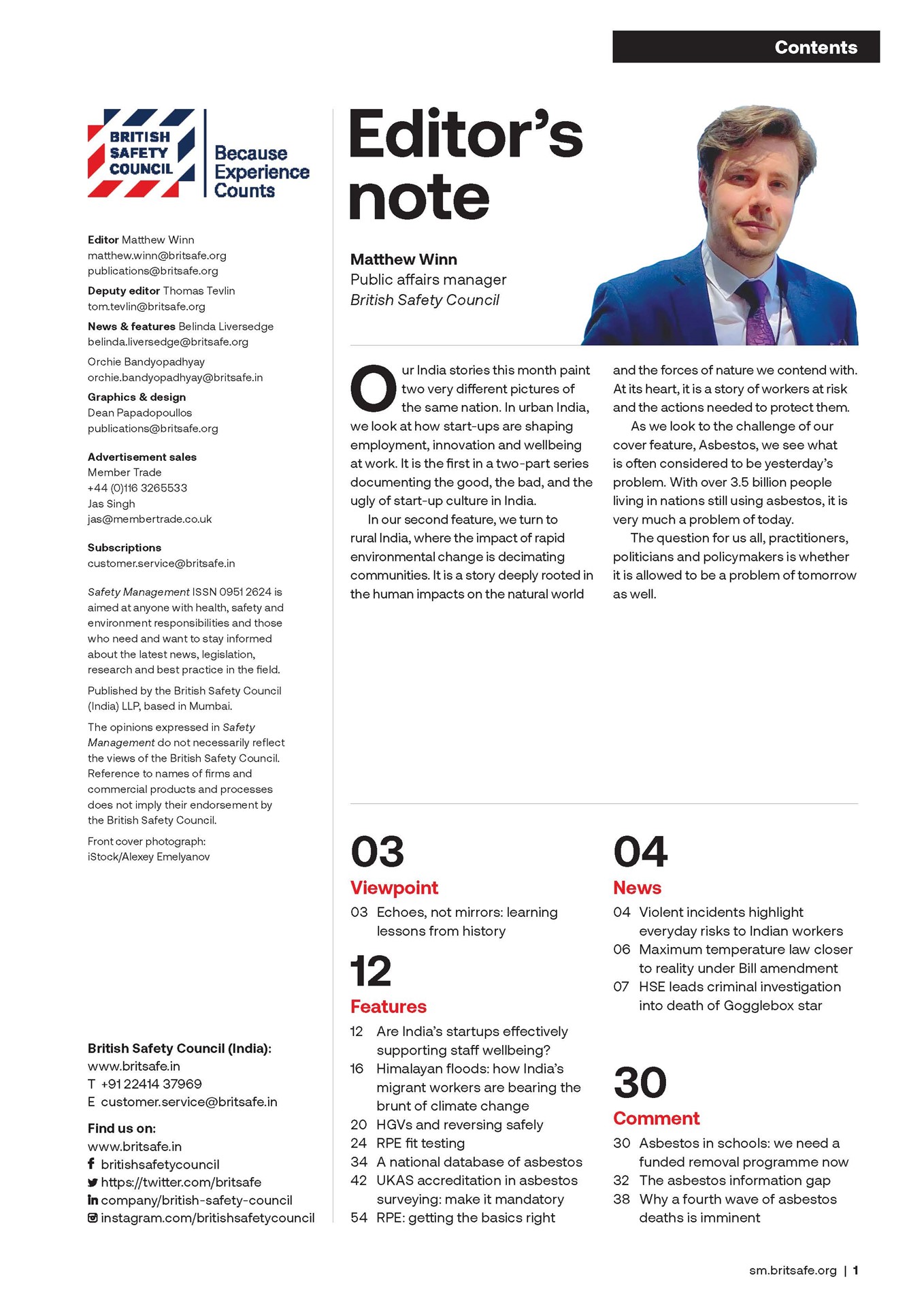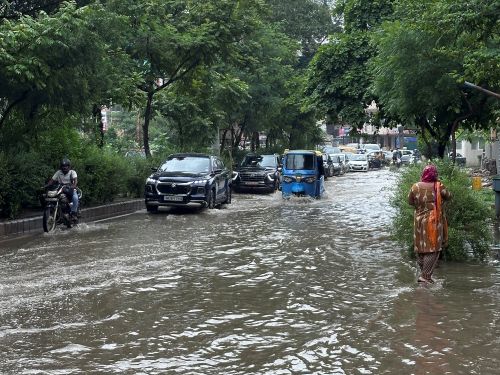Every winter, Delhi experiences harmful levels of air pollution, and campaigners warn the central and state governments are still not doing enough to tackle the problem.
Features
The air we breathe in India
Deepali Chandola’s day begins early. Every morning, the school teacher leaves her Noida home at 7.30 a.m. She rides a two-wheeler to her workplace, and that makes her vulnerable to the effects of a toxic haze enveloping Delhi National Capital Region (NCR).
“The school is only a few kilometres away from home. But riding to my workplace comes with a risk – especially during winter – when Delhi NCR’s already polluted air becomes even more lethal,” she says. She adds that it’s the same situation year-after-year, and her frustration is evident.
Deepali wears a mask and ties a scarf around her face, but finds it offers her little relief with the air quality index (AQI) in Delhi NCR flying off the charts after Diwali.
 Credit: iStock BDphoto
Credit: iStock BDphoto
The NCR was already under a blanket of smog before Diwali due to agricultural stubble burning by farmers in the neighbouring states of Punjab, Haryana, and Uttar Pradesh. Bursting of crackers during the festival coupled with stubble burning contributed to a rise in pollution in Delhi and its satellite cities. The city had a ‘severe’ AQI touching 462 a day after Diwali, the worst since 2016.
The AQI measures the concentration of poisonous particulate matter PM2.5 in a cubic metre of air. Anything above 100 is considered unhealthy.
For the last couple of years, every October to November, Deepali – like many in Delhi and nearby areas – experiences respiratory trouble such as shortness of breath, wheezing and incessant coughing, besides burning of eyes. This year has been no different.
“This toxic haze that has smothered Delhi NCR since Diwali is unlikely to go away soon just like my hacking cough and sneezing,” she says. “When this happens at the start of winter each year, the mere act of breathing becomes dangerous.”
High pollution levels
Delhi suffers pollution levels 20 times higher than the levels deemed healthy by the World Health Organization, the UK’s Guardian newspaper reports.
According to the University of Chicago’s Air Quality Life Index (AQLI) study, released in September, residents of Delhi and Kolkata could lose over nine years of life expectancy if the 2019 levels of air pollution continue. Another report by Lancet Planetary Health released in December 2020 found some 1.67 million Indians died due to air pollution in 2019.
Deepali was fortunate that she did not have to be hospitalised, unlike a 30-year-old man who was admitted to the emergency ward of a Dwarka hospital in Delhi on 31 October with low oxygen levels and breathing difficulties.
“On examination, his blood levels showed eosinophilia which is indicative of an allergy that caused a flare-up of bronchial asthma,” said Dr Akshay Budhraja, a consulting pulmonologist at the hospital in Dwarka where the man was treated. “This is mainly due to poor air quality containing several allergens and toxins.”
Experts point out that a combination of factors, like vehicle and industrial emissions, and dust and weather patterns, make Delhi the world’s most polluted capital. Low wind speed also plays a part as it traps the pollutants in the lower atmosphere.
According to an analysis by the Delhi Pollution Control Committee, people in the national capital breathe the worst air from 1–15 November every year, as unhelpful meteorological conditions trap pollutants coming from local sources and stubble burning.
Medical professionals say there has been a “30 to 40 per cent increase” in the number of people visiting hospitals with respiratory problems.
Dr Vikas Maurya, head of the Pulmonology Department at Fortis Hospital in Shalimar Bagh, says he has observed an increase in the severity of asthma attacks. “People with pre-existing respiratory problems require hospitalisation as pollution aggravates these conditions,” he says.
According to Dr Randeep Guleria, director of the All India Institute of Medical Sciences (AIIMS) in Delhi, air pollution could lead to more severe cases of Covid-19 infection in the coming weeks. “Pollution affects respiratory health, especially to those who have lung and asthma issues,” he said. He added that both air pollution and coronavirus affect the lungs and could worsen a patient’s condition, at times resulting in death.
During November, on many days, the air quality index for Delhi remained above 451 on a scale of 500, indicating ‘very poor’ and ‘severe’ conditions that could affect even healthy people and seriously impact those with existing ailments.
Drastic action needed
Environment activist Manu Singh says drastic measures are required to help improve air quality in Delhi-NCR. “What did the government do, I don’t understand! Farm waste is still burning, on top of that, there was large-scale violation of the Supreme Court rules banning firecrackers on Diwali,” he said.
Six years after the Delhi High Court famously observed that living in the capital city was akin to living in a gas chamber, on 17 November 2021 the Supreme Court rapped the central and state governments over their failure to mitigate pollution for Delhi’s citizens who endure toxic air almost every winter when temperatures and wind speed drop and pollutants get trapped in thick smog. In a scathing remark, the top court said the bureaucracy does not act and only waits for courts to give the order. It added that the city and the central and state governments mustn’t simply just wait for the weather to change to take the smoke away.
The Supreme Court also asked the authorities to take immediate measures to improve air quality, like banning vehicles from Delhi’s roads. The court also directed the Commission for Air Quality Management (CAQM) in NCR, a panel under the union Ministry of Environment, Forest and Climate Change, to come up with measures to curb pollution.
After the top court’s intervention, in mid-November the CAQM shut down five coal-fired power plants around Delhi, banned trucks carrying non-essential goods and stopped construction work in the capital and its satellite cities.
Stubble burning
The Supreme Court said there was “no basis for a hue and cry about farm fires” after it was told by the central government that stubble burning contributes to only four per cent of air pollution in Delhi-NCR.
This view was supported by environmentalist Vimlendu Jha. “Stubble burning is a factor, yes, but it is an episodic source” he said. “There is a lot more, such as vehicular pollution, thermal power plants, open burning of garbage, unregulated, haphazard construction and demolition activity, firecrackers and toxic politics, that goes into transforming Delhi into ‘a gas chamber’ every year; and, in order to fight the problem, those long-term factors ought to be taken seriously as well.”
Meanwhile, government offices in Delhi-NCR re-opened in late November, after the state government had ordered government employees to work from home for a period in November to attempt to reduce air pollution. Private companies had also been asked to encourage their staff to work from home.
The announcement to reopen offices came as the air quality in Delhi showed an improvement, coming down from the ‘very poor’ to the ‘poor’ category on 24 November for the first time in 10 days, according to the System of Air Quality & Weather Forecasting and Research (SAFAR). The overall air quality index in Delhi stood at 280 on that day.
As Safety Management went to press at the start of December, schools, colleges and other educational institutes in Delhi-NCR were ordered to close due to high air pollution levels. Schools and colleges in the city of Delhi had already been ordered to close in the middle of November.
According to a bulletin issued by SAFAR, from late November local surface winds in Delhi-NCR are likely to increase, which will hopefully improve air quality.


FEATURES

Flash flooding at India’s technology cities: a tale of unbridled development and climate change
By Orchie Bandyopadhyay on 13 October 2025
India’s technology hub cities like Bengaluru and Hyderabad are increasingly suffering severe flooding, and climate experts say urgent action is now required to reverse extensive construction over natural water-absorbing landscape features to protect people and businesses.

India’s startups: can they balance growth with employee wellbeing?
By Orchie Bandyopadhyay on 13 October 2025
The founders of Indian startups are understandably keen to rapidly grow their businesses, but commentators argue a lack of support for employee wellbeing actually threatens to hinder business success. Here, in the second of our two-part feature on employee wellbeing in startups, we explore the human and business problems arising from inadequate wellbeing support for staff.

